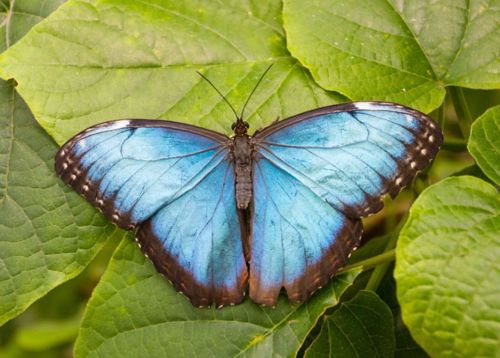Blue Morpho Butterfly
Scientific Name: Morpho menelaus (or Morpho didius, depending on specific species, as 'Blue Morpho' refers to a genus of butterflies)
Order & Family: Order: Lepidoptera, Family: Nymphalidae (Brush-footed butterflies)
Size: Wingspan typically ranges from 5 to 8 inches (12.5 cm to 20 cm), making them one of the larger butterfly species.

Natural Habitat
Tropical rainforests of Central and South America. They are often found in the forest understory, clearings, and along riverbanks.
Diet & Feeding
Adult Blue Morpho butterflies typically feed on the juices of rotting fruit, fungi, sap flows, and even animal decomposition. They are not known to consume nectar from flowers. The larvae (caterpillars) primarily feed on the leaves of host plants, particularly Vines of the pea family (Leguminosae) and other plants like Sapindaceae and Bignoniaceae.
Behavior Patterns
Adult Blue Morpho butterflies are diurnal (active during the day) and are often seen flying through the forest understory, sometimes in groups. Their iridescent blue wings flash in the sunlight, while their dull brown undersides provide camouflage when wings are closed. The larvae (caterpillars) feed on host plants, primarily vines, and undergo metamorphosis into a chrysalis before emerging as an adult butterfly. They exhibit a characteristic undulating flight pattern.
Risks & Benefits
Benefits: Blue Morpho butterflies are important pollinators, though less so than some other butterflies due to their diet mostly consisting of rotting fruit. They serve as a food source for birds, bats, and other insectivores, contributing to the food web. Their larvae can help in breaking down plant matter. Their striking beauty also makes them a popular attraction in butterfly gardens and eco-tourism, contributing to local economies and fostering appreciation for biodiversity. Risks: There are no direct risks to humans from Blue Morpho butterflies. However, habitat destruction and deforestation pose a significant threat to their populations.
Identified on: 8/16/2025